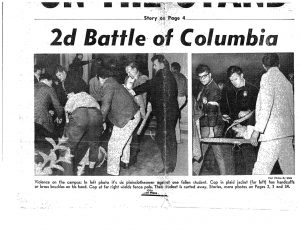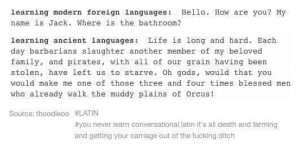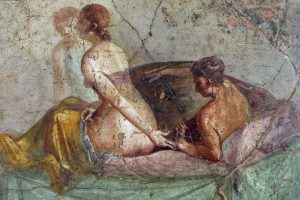As promised in my last post, here is the first of a few comments and reactions to my summer reading. The first book off the stack was A Time to Stir, Paul Cronin’s edited volume of essays on the student revolt or riot or disturbance at Columbia in April, 1968, when students occupied half-a-dozen university buildings for a week. They—we—were protesting the Vietnam War and racism, the one manifested by the university’s involvement with research funded by the Defense Department and the other by its proposal to build a gym in Morningside Park at the edge of Harlem.
In 1968 I was a junior at Columbia College, the men’s undergraduate division of the university. My memory doesn’t seem to be as good, or as detailed, as that of my classmates who contributed to Paul’s volume. I remember being at some demonstrations, spending a little time in Fayerweather Hall (which, as the book reminded me, was occupied by a loose coalition of hippies and graduate students–pretty much the kind of people that I hung around with anyway), and carrying a stretcher on the second night that police came onto campus. I think the stretcher parties were organized by the university chaplain’s office. That was almost the only time that I didn’t carry a camera, but a NY Post photographer caught me; I’m the one in glasses in the right-hand picture from the front page of May 22, 1968.
 Then as now, I was a centrist in my politics, fond of sense and skeptical of passion. I found SDS tiresome and authoritarian (and Paul’s book did nothing to change that impression) and the so-called Majority Coalition sweaty and simplistic, even though I knew and liked people in both groups. If there were two sides to any question, I was apt to see all three of them, and not at all good at making up my mind about which one I agreed with. That may explain my lack of detailed memory—because I perceived the events as confused and inchoate, that’s how I remember them fifty years later.
Then as now, I was a centrist in my politics, fond of sense and skeptical of passion. I found SDS tiresome and authoritarian (and Paul’s book did nothing to change that impression) and the so-called Majority Coalition sweaty and simplistic, even though I knew and liked people in both groups. If there were two sides to any question, I was apt to see all three of them, and not at all good at making up my mind about which one I agreed with. That may explain my lack of detailed memory—because I perceived the events as confused and inchoate, that’s how I remember them fifty years later.
A Time to Stir taught me a lot about events that I experienced. Perhaps the most important thing that I learned was how important the Black students in the Society of Afro-American Students were to the shape of events. I didn’t pay much attention to their occupation of Hamilton Hall, since the SDS occupation of the university’s main administration offices in Low Library sucked up most of the attention of people both inside and outside the university. But the SAS emerges from A Time to Stir as the most serious, disciplined, and politically savvy of the occupiers, astutely exploiting white anxiety over race—Martin Luther King, Jr., remember, had been assassinated only weeks before the Columbia disturbances—and leveraging their links with the national civil rights movement and the people of Harlem.
Against the background of our current political dysfunction, A Time to Stir suggests roads not taken and potentialities not realized, both national and personal. Still, one wonders what, finally, we accomplished. The Viet Nam War did end, and Columbia abandoned its plans to build a gym in Harlem, cut ties with the Institute for Defense Analysis, and gave up its Navy ROTC program. NROTC returned to Columbia in 2013, and the university’s new Manhattanville campus has expanded into West Harlem. We’re friends with the Communist government of Viet Nam. Robert Southey’s “The Battle of Blenheim” comes to mind:


